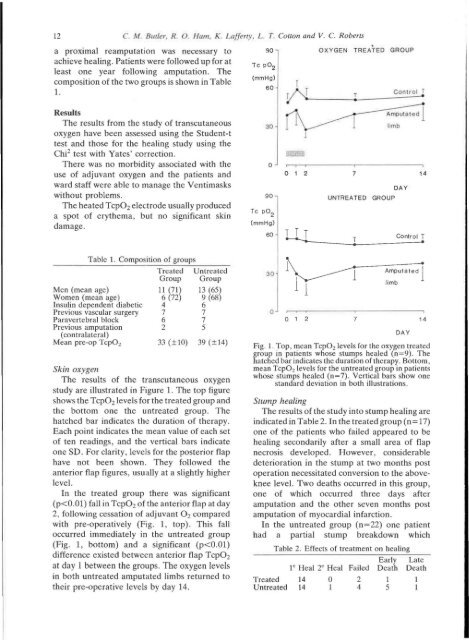View Complete Issue PDF
View Complete Issue PDF
View Complete Issue PDF
You also want an ePaper? Increase the reach of your titles
YUMPU automatically turns print PDFs into web optimized ePapers that Google loves.
12 C. M. Bmler, R. O. Ham, K. Lufferty. L. T. Cotton and V. C. Roberts<br />
a proximal reamputation was necessary to<br />
achieve healing. Patients were followed up for at<br />
least one year following amputation. The<br />
composition of the two groups is shown in Table<br />
1.<br />
Results<br />
The results from the study of transcutaneous<br />
oxygen have been assessed using the Student-t<br />
test and those for the healing study using the<br />
Chi 2<br />
test with Yates' correction.<br />
There was no morbidity associated with the<br />
use of adjuvant oxygen and the patients and<br />
ward staff were able to manage the Ventimasks<br />
without problems.<br />
The heated TcpO 2<br />
electrode usually produced<br />
a spot of erythema, but no significant skin<br />
damage.<br />
Table 1. Composition of groups<br />
Skin oxygen<br />
The results of the transcutaneous oxygen<br />
study are illustrated in Figure 1. The top figure<br />
shows the TcpO 2<br />
levels for the treated group and<br />
the bottom one the untreated group. The<br />
hatched bar indicates the duration of therapy.<br />
Each point indicates the mean value of each set<br />
of ten readings, and the vertical bars indicate<br />
one SD. For clarity, levels for the posterior flap<br />
have not been shown. They followed the<br />
anterior flap figures, usually at a slightly higher<br />
level.<br />
In the treated group there was significant<br />
(p
















